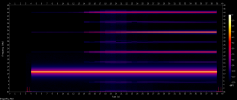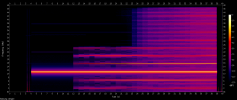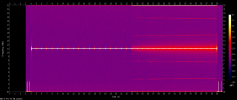It's not a tired cliche, but a well known fact that audio engineers in certain genres of popular music are deliberately pushing things to sound as loud as possible.
But like he said, they are only doing what they are told to by their clients. If you are paying the mastering engineer he will do whatever you ask.
By way of contrast, I'll mention that this problem isn't nearly as bad in video or film.
Dolby has some loudness guidelines that allow for headroom. But I'm not sure if they are mandated, and in any case they are allowed to
use the headroom for loud parts. Also, movie theaters are loudness-calibrated. People would complain and walk-out of the theater if movies were "loudness war" compressed and limited. As it is, people often complain about movie theaters being too loud.
I wish the music industry would adopt similar standards.
I'm NOT optimistic.

But I'm old and I already own most of the music I want (or will want) so I don't really care that much.

We've had a couple of generations of musicians & producers that have grown-up with highly compressed music and they probably think music is supposed to be constant loudness (no dynamics) if not constantly-loud or constantly "intense".
But it's not only that... The loudness wars started back in the analog days.
When CDs were introduced I remember thinking that popular music would become more dynamic to take advantage of the increased dynamic range. Obviously, that didn't happen and it didn't take long for them to figure-out how to use DSP to compress and limit more than was possible with analog processing (better digital weapons for fighting the loudness war).
I keep reading that "the loudness wars are over" because the streaming services all use loudness normalization making it harder to "win" the war. But I use ReplayGain on the files that I own and the last couple of CDs I bought and ripped (I don't buy a lot) were getting a ReplayGain adjustment around -10dB. That much gain reduction is unusual compared to most of the (mostly older) music that I have so it hasn't gone-away and it might be getting worse!












